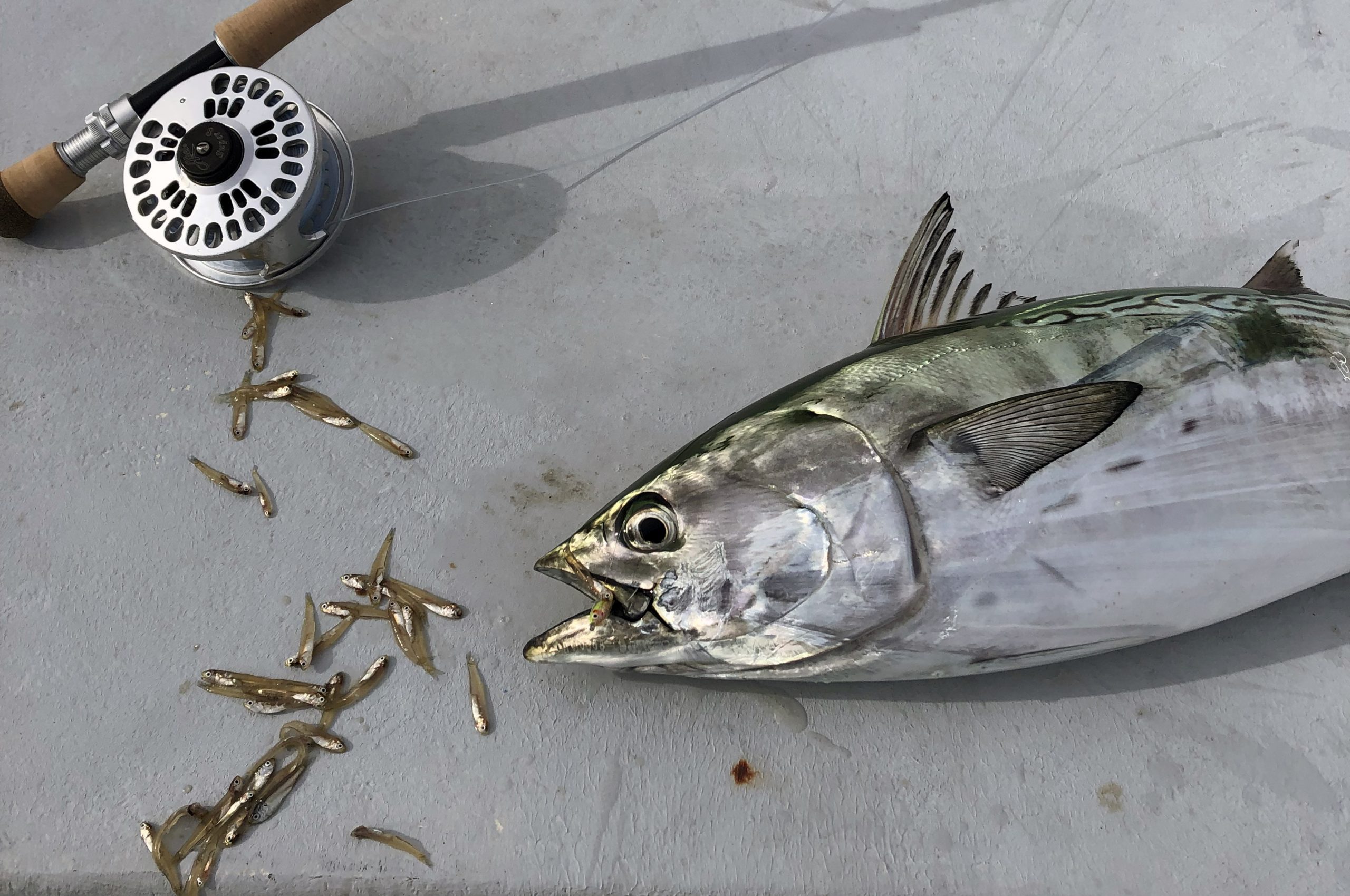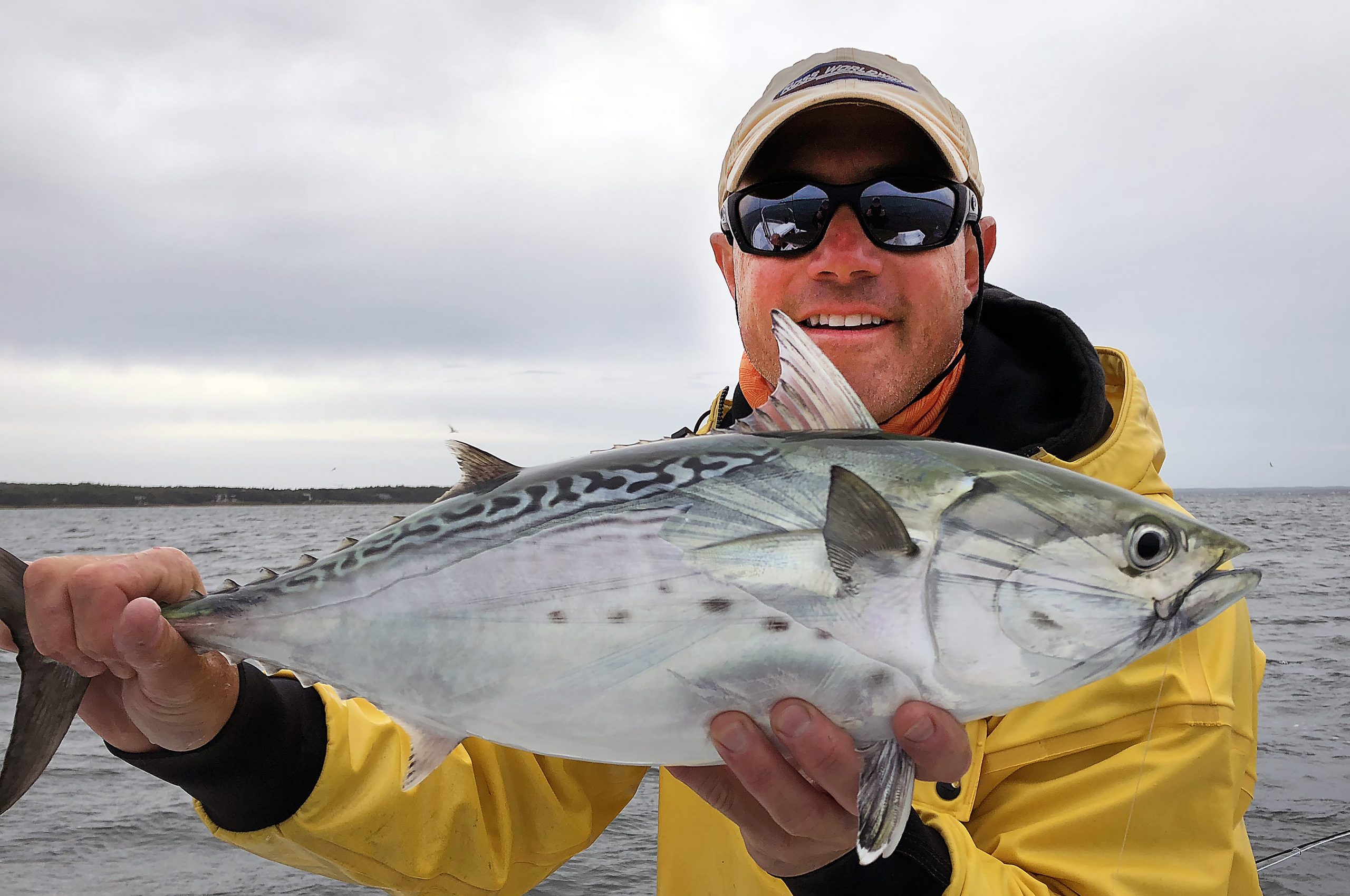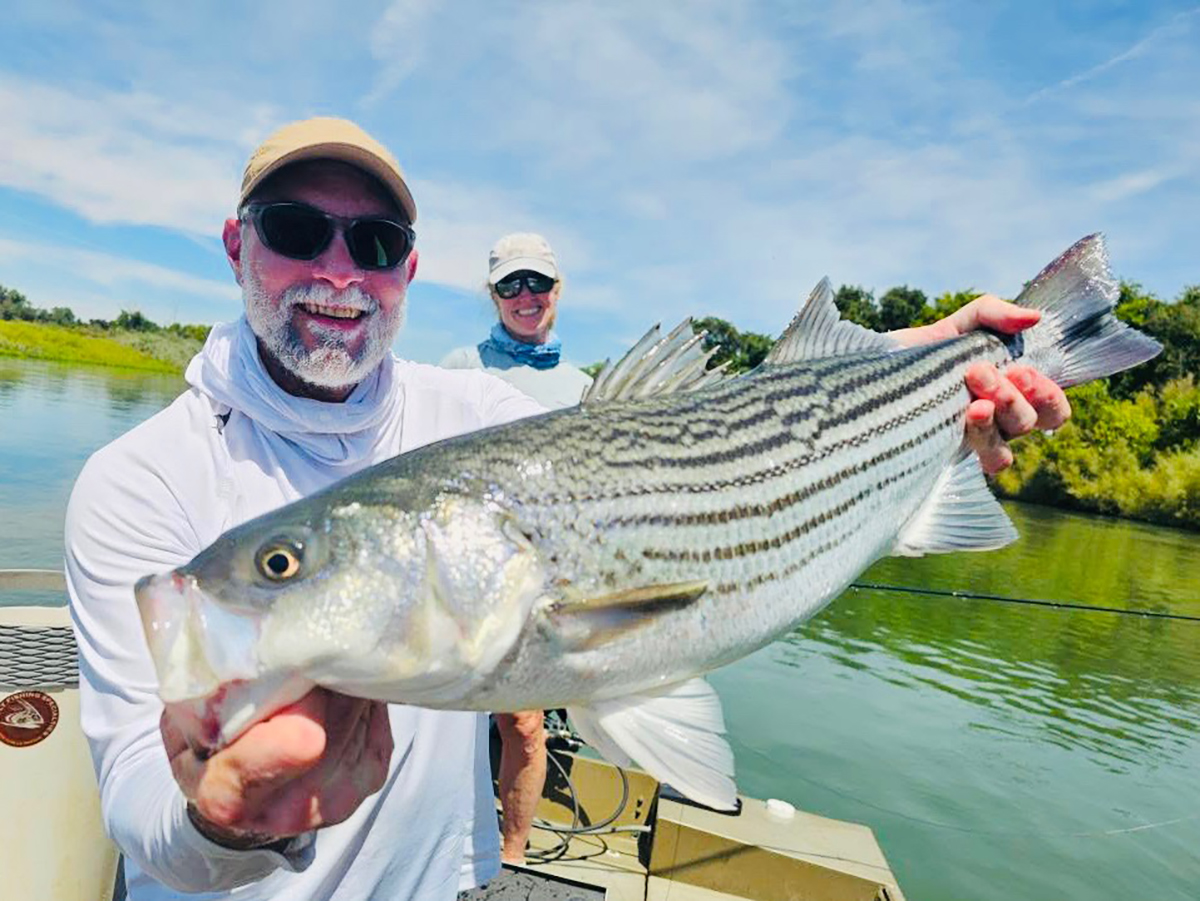
The name false albacore triggers an immediate reaction from local fishermen – fun!
This species of tuna-like fish puts up an amazing fight once hooked, but by prolonging the battle, you may also greatly reduce its survivability back in the sea. This species is easy to identify from its closest cousin, the bonito.
Supporter Spotlight
False albacore is known by many names around the world, including Atlantic bonito, little tunny, Atlantic little tuna, Atlantic little tunny, bone eater and mackerel tuna.
In North Carolina they are often called little tunny, which are found from the Gulf of Mexico north through the temperate and tropical waters of the Atlantic Ocean as far north as the south side of Cape Ann, Massachusetts. Little tunny is also caught globally in the Mediterranean and Black seas.
Little tunny is one of the most common members of the mackerel/tuna family found in North Carolina waters.
False albacore is tuna shaped, with a steel-blue coloration on top and primarily silver on the bottom. They have wavelike stripes along the posterior parts of their backs and dark spots below the pectoral fin just behind the gill plate, said Anne Markwith, fisheries biologist with the North Carolina Division of Marine Fisheries.
“Until 2011, false albacore was part of the South Atlantic Fishery Management Council’s Coastal Migratory Pelagics Fishery Management Plan,” she said.
Supporter Spotlight
Both the regional management council and the federal government dropped little tunny from their plans that year.
“Based on the information available at that time, false albacore did not seem to meet the federal national standard guidance for stocks in need of conservation and management,” she said.
Markwith prepared a memorandum published in 2017 to the North Carolina Marine Fisheries Commission on false albacore, because there was still no state or federal management measure in place for the species.
In addition, the Mid-Atlantic Fishery Management Council did not include false albacore in its unmanaged forge (fish) amendment in 2016 because of their large size and higher trophic level, or place in the food chain, the memorandum stated.
“Due to high public concern for the species, particularly from the recreational fishery, council staff recommended that the council consider developing management actions for the species in the future,” said Markwith.

In North Carolina, there are still no commercial or recreational regulations in place for little tunny.
“North Carolina only accounts for a relatively low proportion of the overall coastwide landings of false albacore,” she said.
Most of these landings are from state waters and not federal waters, potentially making state management and enforcement difficult. In addition, the Mid-Atlantic Fishery Management Council might also be developing a small tuna fishery management plan, which would help to regulate the fishery in federal waters, the memorandum states.
“At this time, the division recommends not to take any management actions to the advisory committees but instead continue to monitor landings and collect biological information to help inform any management decisions that may result in the future,” said Chris Batsavage, fisheries biologist and special assistant for councils with the North Carolina Division of Marine Fisheries.
“This is a schooling fish that spends most of its life in the open ocean and coastal ocean areas. It has a torpedo-shaped body, deeply forked tail resembling that of a tuna, with a pointed snout and crescent tail, which is perfect for short, fast bursts of speed to escape predators,” said Markwith.
In the Pacific Ocean portion of their range, false albacore resembles the striped bonito closely in body shape and in size. Fin structure is almost identical as well. The color pattern of false albacore helps distinguish this fish from a striped bonito.
“The color is above the horizontal lateral line of the fish, and the lateral line does not bend downward below the second dorsal (top) fin, and the anal fin starts farther back than the striped bonito,” she said.
Little tunny can form massive schools that are almost a mile long. When they are actively feeding, they are noisy and churn up the water with splashing and foaming action.
“False albacore feed mostly on other fish including scads, sardines and herring, but will also eat crustaceans and squid,” Markwith said.
In North Carolina, both sexes are fast growing, and males are generally larger than females. Females as young as a year old, or between 10.6 to 14 inches, are capable of spawning.
“Males mature at approximately 16 inches in length. In the Atlantic Ocean, false albacore will spawn from April through November. The maximum age of little tunny is thought to be 10 years old,” said Markwith.
When they are spawning, that activity takes place offshore in waters deeper than 100 feet.
The spawning season lasts for between four and eight months in both the Northern and Southern hemispheres, coinciding with warm periods of each year.
“Fertilization takes place with the female releasing her eggs in batches of as many as 1.7 million eggs in the water column. Males release their milt, or sperm, at the same time, which fertilizes the free-floating eggs,” she said.
Fertilized eggs are round and clear with a diameter of 0.8-1.1 millimeters and an overall amber color.
“Larvae hatch in about 24 hours after fertilization and are only 3 millimeters in length. Little is known of this stage of their lives, other than later on in life, they will make the change from juvenile to adult false albacore,” Markwith said.
Little tunny usually does not live to become much older than 5 years.
Recreational fisherman enjoy catching false albacore because of their speed and strength. Their average length is 32 inches, weighing about 20 pounds.
The largest known specimens can run as large as 48 inches in length and weigh as much as 30 pounds.
“There are strong commercial and recreational fisheries between Cape Cod and North Carolina each year between August through December,” said Batsavage.
“Fishing for false albacore is seasonal because they are such a highly migratory species, and will travel great distances during their comparatively short lives,” he said.
One of the best false albacore fisheries in the world is off the coast of Cape Lookout. A popular method of catching this species is by using fly-fishing equipment because it is reported to be especially challenging and a lot of fun.
It is important to get these fish to the boat quickly, as they will fight until their death if not handled with care. Little tunny is reportedly not good to eat, so it is best to quickly unhook them and release them back into the water in a timely fashion to avoid higher mortality of this fish when practicing catch and release.
The North Carolina state record for false albacore is a 32-pound specimen caught in 2015 off Morehead City.
When fishing for sport and you plan to release any fish, it is recommended to use barbless hooks that will make unhooking the fish easier and improve its chance of survival after re-lease.
It is a best practice to release this fish headfirst from about waist height above the water. Using this technique will give them a rush of ocean water through their gills and badly needed oxygen as they swim off.







